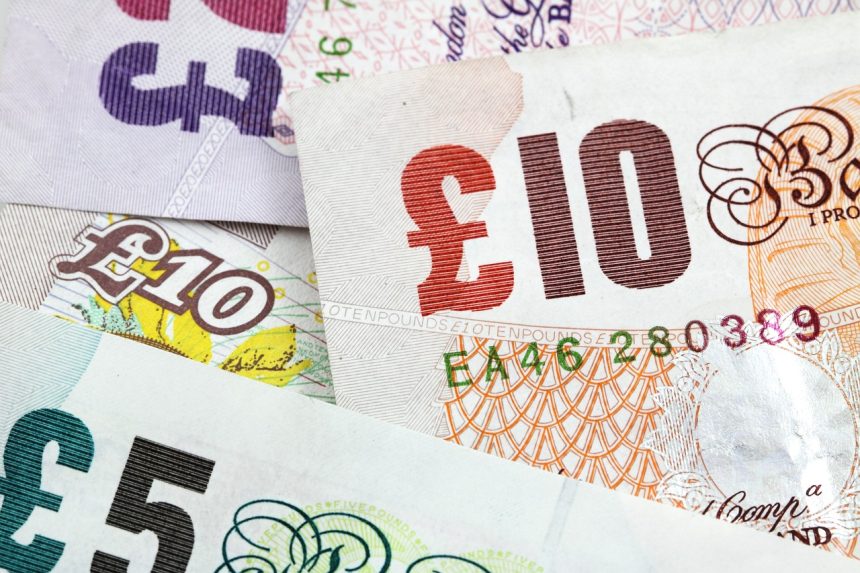Pound sterling loses all of its gains versus the dollar after postive US Data.
In Thursday’s North American trading hours, the pound sterling (GBP) fell vertically against the US dollar (USD) following the release of solid US monthly retail sales data for July and reduced Initial Jobless Claims for the week ending August 9. The Pound pair gives up its entire intraday gain and falls to near round-level support at 1.2800.
US retail sales increased by 1% in July, but unemployment claims unexpectedly decreased in the week ending August 9.
The Retail sales data, a vital measure of consumer spending that drives consumer price inflation, returned to expansion and increased at a healthy 1% rate, exceeding expectations of 0.3%. In June, retail sales fell by 0.2%, down from a flat result.
Meanwhile, the number of people collecting unemployment benefits for the first time fell to 227K, compared to predictions of 235K and the previous announcement of 234K, which had been revised upward from 233,000. Positive economic data has resulted in a robust comeback in the US dollar. The US Dollar Index (DXY), which measures the Greenback’s value against six major currencies, rises more than 0.6% to 103.20.
While buoyant Retail Sales and fewer jobless claims have signaled that price pressures may emerge again and the labor market Conditions are not as severe as they appeared, but they are inadequate to influence firm speculation about Federal Reserve (Fed) interest rate decreases in September. Expectations for a firm Fed rate cut surged after the Consumer Price Index (CPI) report on Wednesday revealed that inflationary pressures increased mildly, as predicted.
Following the announcement of the inflation report, Atlanta Fed Bank President Raphael Bostic provided dovish interest rate guidance, adding to optimism that the Fed would lower interest rates in September. Bostic stated in an interview with the Financial Times (FT) that he is open to rate reduction in September. When asked about the size of the rate decrease, Bostic said he is open to a half-point reduction if the labor market deteriorates more.
Daily Market Movers: Pound Sterling beats its key counterparts in terms of UK economic resiliency.
In Thursday’s New York session, the pound sterling outperformed all of its major peers, with the exception of the US dollar and the Australian dollar. The British pound rose further when the Office for National Statistics (ONS) reported that the economy grew in line with predictions in the second quarter of this year.
According to the flash Gross Domestic Product (GDP) estimate, the UK economy gained 0.6% quarterly and 0.9% annually. The second quarter’s growth rate was slightly slower than the rate recorded from January to March, but it was nonetheless substantial. The UK economy remained flat in June compared to the previous month, as expected.
A A strong growth rate and easing price pressures are a huge relief for Bank of England (BoE) officials, who were concerned that keeping interest rates higher for an extended period of time due to stubborn inflation would increase the burden on households and the economy as a whole.
On Wednesday, the CPI report for July indicated that the core CPI, which excludes volatile goods like as food, energy, alcohol, and tobacco, fell at a faster-than-expected rate to 3.3%, down from 3.4% predictions and 3.5% in June. As wage growth slowed, price pressures in the service sector fell sharply, contributing to the reduction in core inflation.
This drop in inflation has fueled predictions of a consecutive interest rate lowering by the BoE in September.
Markets priced According to Reuters, there is a 44% possibility of a quarter-point rate decrease by the BoE.
Markets priced According to Reuters, there is a 44% possibility of a quarter-point rate decrease by the BoE, up from 36% before the data was disclosed.
Aside from monthly and quarterly GDP, the ONS has also released factory data for June. According to the study, monthly industrial and manufacturing production increased at a robust rate of 1.1% and 0.8%, respectively, despite investors’ expectations of just minor rise. Year on year, Industrial and Manufacturing Production declined at slower rates of 1.4% and 1.5%, respectively.









